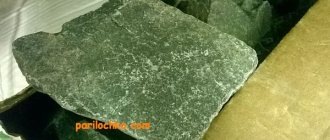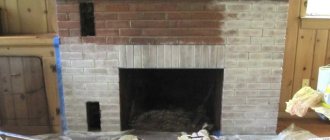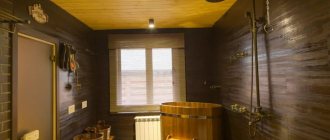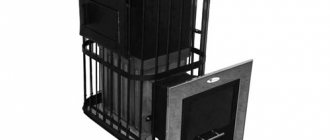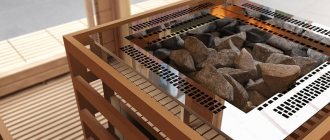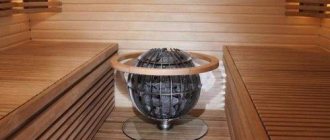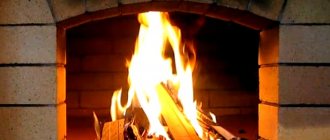Not so long ago, at one of the antique markets, in one of the industrial cities in the south of the country, a mass of cast iron cannonballs of moderate weight and compact size appeared, which the seller, a young man in massive glasses, from a decent Jewish family, as usual, positioned as shells from Napoleonic artillery of the era of the Patriotic War. war of 1812. “Napoleonic cores” sold like hot cakes among antique lovers, fortunately, the price was quite affordable. Supplies of raw materials did not dry out, and each sufferer, with obvious satisfaction, shopped for rare antiques. How the Napoleonic convoy got nowhere, away from the main theaters of combat, and how it survived in such numbers—local experts did not ask provocative questions of this kind and did not bother with historical analysis. How great was the amazement of the collectors when one old worker, naturally without a higher historical education, but with enormous practical experience, recognized the one-off collectibles as quite an ordinary and ordinary cast-iron backfill of an industrial ball mill, which the cunning bespectacled man, as necessary, exhaustion of current inventories, he shopped for nothing at the picturesque ruins of a local stone foundry. The disgraced connoisseurs of antiques, however, did not grieve for long. Cast iron castings migrated from collection shelves to the baskets of sauna stoves. Do not let the good, for which hard-earned money was paid, go to waste with a scandal, and sometimes even assault, torn from the family budget. Cast iron balls perfectly accumulate heat, they are very durable and practical to use. Their main disadvantage is “flat” and hard steam, which a true connoisseur will never confuse with steam generated on the right stove stones. In general, this instructive story once again brilliantly proves the advantage of an education received at a vocational school over a diploma issued by a higher educational institution. However, we will not go into the intricacies of public education, but, as they say, we will immediately move on to the practical plane of considering the topic of today’s conversation: cast iron balls for a bath.
What properties of stone are taken into account when laying
The choice of stones for a bath is influenced by their cost, as well as a number of physical and chemical properties. First of all this:
- safety - when water is heated and evaporated from it, the stone should not release substances hazardous to health;
- strength directly dependent on heat resistance - the material should not be destroyed by exposure to high temperatures;
- Heat capacity – the ability to accumulate a large amount of heat and retain it for a long time.
Heat capacity depends on the heating temperature Source pinimg.com
Not all rocks have a full set of these important characteristics, so you cannot fill the heater with boulders of unknown origin found on the banks of a river or in the mountains. It is better to buy them in specialized stores, having inquired in advance about the properties of the selected filler.
But the listed properties have little effect on how to properly place stones in a sauna stove in order to get the maximum return and benefit from them. It is more important to consider thermal conductivity and size. And if great importance is attached to the aesthetic component of the steam room interior, then so is the appearance.
Stones differ in color, shape, type of processing Source 6gran.ru
The best stones for a bath: reviews
By the way, everything is always complicated with reviews on the Internet; it’s better to go for an experiment and trust your own feelings than to strangers writing for unknown reasons.
Let's take the same jadeite . There are many reviews about “the best stone in the world,” but if you analyze them, the main advantages are: the steam has become lighter, the smell is pleasant. No one was healed by the healing stone, threw away their crutches and started dancing.
And there is reason to think about whether a person gets the most pleasure from the money spent? Checking it is as easy as shelling pears: buy a box (20 kg) of high-quality jadeite, put it in the top layer and try the steam. And the toad will not strangle, and the impressions will be personal, not from words.
The best reviews are those indicating the brand of the stove, operating mode, duration and results.
One of the users says that he had two stoves at his disposal: Angara 2012 and Compact .
The compact was loaded with a mix, the revision was carried out 4 years after loading. It turned out that the following rocks suffered the most: abbro-diabase and crimson quartzite. Soapstone chlorite produced the most .
The jadeite did not break at all, so the user loaded the new stove exclusively with jadeite - both into the open and closed heater. Two years later, I carried out the first inspection: in the open one, nothing happened to the stone, but in the closed one , it broke into small fragments about 1/5 of the entire backfill.
Other users are in no hurry to share such detailed information. Someone boasts that his gabbro-diabase from Karelia stood for 10 years, and during the inspection only a few broken stones had to be replaced, and a little sand had to be raked out.
Another steamer reports the absolutely fantastic survival of soapstone from the Onot talc deposit : the stone worked for more than three decades in different furnaces!!!
Sometimes stones found independently in nature also demonstrate good survival: one user enjoyed steam from
forest stones , another reported the survival of pebbles from a neighboring field for 10 years.
From the examples given, it is clear that no one has used all the options, but considers the best stones for a bath to be those with which he has dealt.
On the other hand, in the reviews there is nothing contrary to the nature of the stone: if you do not heat it to the limit, do not “wash” it with an open fire, in which everything oxidizes at a terrible speed, then it will live in your stove happily ever after. And if the stove is intermittent, with an open fire, then you need to be prepared to frequently replace the contents of the heater.
Video
Listen to a professional's advice on choosing the best stones:
And here is a review from a simple user.
And if you agree that there is nothing better than your own experience, then maybe share it with us? We decided to invite all readers who have experience using different stones and have formed their preferences to vote in our rating of bath stones:
Laying options
The choice of how to properly place stones in a sauna stove depends on their characteristics. In order for the temperature in the steam room to remain high for a long time even after the fire in the firebox has gone out, it is necessary to properly equip and fill the heater. The main task is to spend less time and fuel on heating the stones and ensure their slow cooling. This can be done in different ways.
Laying taking into account thermal conductivity
This installation method is used when stones of different types with different degrees of heat transfer are used as a filler for the heater. In order to heat the entire mass up to the very top as quickly as possible, it is necessary that the lower layers heat up easily and transfer heat to those located above. That is, the lower the stone lies, the higher its heat transfer coefficient should be.
This is interesting! In the royal baths, instead of stone, cast iron cores were placed on the bottom, the thermal conductivity of which was many times greater. They are still used in modern Sanduns.
Today on sale you can find cast iron stones for baths in the form of balls, cones, shells Source prom.st
Let's give the maximum thermal conductivity coefficient for the main rocks used in heaters:
- crimson quartzite – 7.6;
- soap chloride – 4.7;
- jadeite – 3.6;
- basalt – 3.5;
- porphyrite – 3.37;
- gabbro-diabase – 2.98.
Laying according to shape and size
If you use a stone of the same type, it is advisable to purchase it not of the same size, but of several different fractions from 5-6 to 12-15 cm on the long side. To understand how to correctly place stones in a heater in a sauna, you need to think logically: the larger the element, the greater the amount of heat required to warm it up. This means that it is better to place it closer to the heat source.
It follows from this that the installation must be done in layers, reducing the size of the cobblestones in the direction from the heat source outward. In this case, be sure to take into account the design of the stove and the heater itself, which can be open or closed.
Possible heating schemes for stones Source ruspar.ru
See also: Catalog of companies that specialize in the design and construction of baths
However, small stones also have less surface area in contact with neighboring elements, which reduces heat transfer and heating rate. This problem can be solved by correctly positioning the stones in relation to each other and to the heat source, taking into account their shape.
You can increase the heating area using convection - the free passage of hot air between the elements. To do this, it is necessary to leave voids between them, and the stones themselves should not be laid flat on top of each other, but in a vertical position. In the case of end laying, vertical channels are formed between them, and the heated air does not have to bend around the transverse layers, looking for a way out and stagnating in the lower layers.
When installed correctly, the number of gaps increases and air flow barriers decrease Source twimg.com
Loose masonry not only allows free air circulation, but also extends the life of the stones. When heated strongly, they expand and increase in size, and this requires space. If it is not there, the elements that are in close contact with each other are subject to compression forces and begin to crack and collapse.
The degree of thermal expansion depends on the rock, but it is inherent to some degree in all stones. And this property can be destructive not only for them, but, if laid too tightly, for the walls of the oven. Therefore, voids must be left throughout the entire area of contact between the bookmark and the brick walls.
Laying depending on the type of heater
In closed structures, stones heat up quickly. For them, it is better to choose large fractions so that the backfill is sufficiently free, with channels for hot air circulation and steam release. And fill the heater completely. In this case, the quality of the steam is excellent.
Filling a closed heater Source ytimg.com
An open heater requires more time and fuel to heat up. In order not to reduce its effectiveness, the stones are laid exactly up to the sides, without constructing a slide from them, the top of which will not be able to warm up well, but will absorb thermal energy.
For reference! A small mound can be placed around the chimney if it passes through the heater.
And for a sauna stove powered by electricity, you need to select flat stones of a small fraction so that they fit freely between the heating elements and cannot damage them.
The design of an electric heater requires careful selection of stones Source elektrikaup.ee
The main disadvantages of cast iron elements as a backfill material for a sauna stove
When discussing the consumer qualities of cast iron cores, it is worth noting a number of inherent disadvantages of this material:
- The core, in geometric terms - a sphere, has a rather small “thermal contact spot”, which in some way reduces the intensity and efficiency of heating of the installation. True, it is worth noting that the problem can be easily eliminated by changing the shape of the element, from round - at the core, to ellipsoidal - at the cone, and rectangular - at the bar.
- Constant exposure to temperature and moisture provokes the formation of oxides on the surface of the element, and they, in turn, can become a source of a rather specific smell - “rusty steam,” as experts call it.
- In Soviet times, high-quality cast iron was quite affordable, if not free material, which, if desired, could be assembled literally underfoot: these are the already mentioned working fluids of ball mills and large shot blasting plants, elements of brake and friction mechanisms, grate bars, etc. Now the situation has changed. Convertible high-quality cast iron costs a lot for the manufacturer and as a raw material, and casting finished elements from it at cost is very far from Soviet gratuitousness. Low-grade cast iron with a high graphite content remains available, but we would not recommend using it as an alternative to stone backfill.
- Experts say that the steam generated from cast iron cores is excessively dry, hard and “flat”; it does not have that “muslin” lightness and sophistication as in steam sublimation from noble varieties of stone. In principle, one can partly agree with this statement. Cast iron steam is more associated with the atmosphere of public baths. Indeed, it is worth remembering that the sauna stoves of the famous Sandunovsky baths had 8.7 tons of cast iron filling, and the Seleznevsky ones had about 16 tons.
- Finally, of course, it is worth recognizing that in terms of decorative effect and aesthetic perception, stone backfill looks much more advantageous and creates an atmosphere of pronounced chic and individuality, which faceless cast iron cannot do.
A word from Experienced! Due to its high heat capacity, cast iron is capable, of course, not completely, but to some extent within a certain framework, of correcting the shortcomings of the existing furnace. This is especially true for situations where the stove is prone to “flooding,” that is, it has low thermal inertia, which is typical for compact steel stoves. In addition, a well-heated cast iron core can increase the degree of fineness of steam and go beyond the threshold of producing heavy “viscous”, “raw” steam.
What else to consider when filling the heater
To get the maximum benefit and pleasure from bath procedures, just knowing the rules for laying stones is not enough. It is also advisable to understand their impact on health, be able to determine the required loading volume, and clean and replace them in a timely manner.
How much stone do you need?
When buying a ready-made factory furnace, they focus on the characteristics declared by the manufacturer and select equipment of the required power. As a rule, the volume of the heater in such stoves is sufficient to warm up and maintain the temperature in the steam room, the size of which the stove is selected for.
When installing a homemade brick or metal heater, the required number of stones is calculated based on the volume of the room. It is believed that for every cubic meter there should be about 40-50 kg.
TOP 8 best wood-burning stoves for baths and saunas
Hephaestus PB-04 MS
It is an excellent option for heating a small bathhouse with a volume of up to 15 m3 . Each element of this furnace is solid, which increases the level of reliability and service life.
The model is equipped with a door with glass inserts that allows you to observe the burning of the flame in the firebox and a mesh basket for an open heater.
The walls of the furnace are made of high-quality cast iron, with a thickness of 1 to 6 centimeters, which prevents burnout and corrosion.
The surface can heat up to high temperatures, contributing to the formation of useful fine steam in the room.
- power - 12 kW;
- weight - 165 kg;
- dimensions - 38*42*51.8 cm.
Advantages:
- heats up quickly,
- nice design with panoramic door,
- durability.
Minuses:
- complex assembly
- unpleasant smell when first lighting.
Hephaestus PB-04
The unique design of the stove allows it to be considered one of the most reliable among its kind . The heater is made in the shape of a trapezoid. The use of unusual geometry allows you to quickly reach the desired temperature regime, warming the room and turning water into steam.
The length of the firebox tunnel can be adjusted based on need . The glass used for finishing doors is characterized by increased heat resistance.
A steel ash box is included with the stove.
The service life of the model is from 30 years and above..
- power - 8 kW;
- weight - 151 kg;
- dimensions - 38*42*51.8 cm.
Advantages:
- can be heated remotely,
- modest dimensions.
Flaws:
- long installation
Hephaestus PB-03 M
The sauna stove made of alloy cast iron received a unique design with two fireboxes, as well as a pyrolysis gas combustion system.
The material does not corrode and does not change shape under high temperatures. The air in the room where the stove is installed does not lose oxygen. The heat remains for several hours after the end of combustion.
The package includes a stainless steel ash box, as well as panoramic heat-resistant glass made in Germany.
- power - 18 kW;
- weight - 190 kg;
- dimensions - 59*41.8*75 cm.
Advantages:
- high quality metal,
- rapid heating of the room,
- design.
Flaws:
- takes up a lot of space.
Hephaestus PB-02
A combustion unit with two chambers and enhanced convection allows you to quickly warm up the steam room and maintain the temperature level for a long time.
Heating temperature - up to 750 degrees.
It is possible to move the stove portal into a room adjacent to the steam room for safe combustion.
Requires brick lining.
The door is decorated with elements of artistic casting.
- power - 25 kW;
- weight - 300 kg;
- dimensions - 64.5*45.8*85.5 cm.
Advantages:
- possibility of remote combustion,
- Keeps warm for a long time.
Flaws:
- needs to be lined
- requires the construction of a solid foundation.
Hephaestus PB-03 MS
The stove is equipped with a three-section closed heater, and specially shaped ribs inside the firebox, which promote rapid heating and the formation of useful steam of fine fractions.
The firebox is organized in such a way as to achieve the maximum level of efficiency.
The walls are able to withstand a significant weight of stones.
The door is made of cast iron and decorated with glass.
- power - 12 kW;
- weight - 210 kg;
- dimensions - 50*70*85.5 cm.
Advantages:
- very powerful
- Heats up quickly and doesn't cool down for a long time.
Flaws:
- It's better to put it on top of the foundation.
Vesuvius LEGEND STANDARD 16 (DT-4S)
The wood-burning cast iron stove is equipped with a sealed firebox of three elements with bolted connections . Can heat a steam room with a volume from 8 to 18 m2.
The oven door is not airtight and is decorated with heat-resistant glass.
External heater, built-in chimney.
- power - 16 kW;
- weight - 116 kg;
- dimensions - 56*70*69 cm.
Advantages:
- affordable price,
- nice design.
Flaws:
- leaky.
Vesuvius LEGEND FORGING 16 (270)
The stove of this model is suitable for organizing heating of a steam room from an adjacent, adjacent room . It has a three-section firebox with high efficiency and fast heating.
The volume of the steam room can be up to 20m3.
The model has a classic appearance and bronze color.
- power - 16 kW;
- weight - 96.5 kg;
- dimensions - 70*56*62 cm.
Advantages:
- weighs little
- you can heat from the utility room,
- stylish look.
Flaws:
- low quality metal.
Vesuvius HURRICANE STANDARD 16 (DT-4)
The sauna stove is made of high-quality cast iron and equipped with a spacious open-closed steel heater that helps produce abundant steam.
Type of fuel channel - remote, closed with a solid cast-iron door.
- power - 16 kW;
- weight - 110 kg;
- dimensions - 80*55*88 cm.
Advantages:
- heats up quickly
Flaws:
- You need to constantly add firewood, otherwise the temperature in the steam room drops.
Video description
This short video explains how to determine the weight of a stone backfill:
Can different breeds be used?
There are no and cannot be any objections to mixing stones of different origins in one heater. On the contrary, this approach makes installation easier.
- Allows you to optimize costs by using inexpensive materials for the lower layers.
- Lay down the strongest and most heat-resistant rocks.
- Create an aesthetically attractive composition from stones of different colors.
For decoration, you can lay out the top layer with jasper or a coil Source prom.st
Cast iron boiler for a bath
Boilers should be considered a separate topic related to autonomous heating and hot water supply at home, but due to the fact that some owners install separate boilers in the bathhouse, not wanting to take heat away from the bathhouse stove, we will also touch on this issue.
So, a cast iron boiler for a bath is not a cheap purchase, so I would like it to be cost-effective. It can be the main or secondary source of heat, and it is important what area it will heat .
If, in addition to heating, the boiler is used to heat water, then the best option would be a double-circuit boiler .
Pay attention to the type of fuel - there are boilers that run on coal, wood, and both types of fuel. Focus on the view that is more accessible to you. In this case, it is worth clarifying which of the two will be the main one for your model.
In a wood-burning boiler, the burning time of the fill depends on the volume of the firebox, so models with a larger volume are preferable.
There are boilers whose operation depends on electricity and independent ones . The latter will come in handy in areas where the power often goes out.
+++ This is the truth about cast iron stoves for baths. We hope that the information will be useful to you in practice.
How to prepare stones for laying
If you have installed a new stove, before laying the stones you need to heat it well, completely filling the tank with water. The fire in the firebox is maintained for at least 2.5-3 hours, until the smell from burning paint and other materials used in the manufacture of the stove disappears.
Before placing stones in the sauna heater, they must be washed from dust and dirt. This procedure is necessary for any stones – both store-bought and independently collected. You can use a brush or dishwashing sponge with a hard abrasive layer.
Water heating
For areas where there is no hot water supply, stoves that have their own means for heating water are relevant. Regardless of what material the stove is made of, it will be either heat exchangers or water heating tanks . In both cases, the source of heat is the fuel on which the unit operates.
On a note! There is a difference in where the heat is taken from - from the stove body or from the chimney. In the first case, you reduce the efficiency of the furnace, in the second, you increase it. In addition, water has a very high heat capacity, which means a large heat consumption to heat it.
Cast iron stoves with heat exchanger for baths
A heat exchanger consists of pipes or a register of pipes, or other structure through which water continuously flows (under the influence of convection and gravity or from artificially created pressure). Being in direct contact with the heat source, the exchanger heats up new portions of water. It can be placed inside or outside the stove body, or it can be a coil that wraps around the chimney.
Cast iron stove with heat exchanger on a pipe.
When purchasing a stove, you should ask whether the manufacturer has ready-made heat exchangers suitable for the model you are purchasing. For example, “Sudarushka M” can be equipped with cast iron heat exchangers if the owner does not want to purchase a tank, which is also optionally supplied with the stove.
Cast iron stove with sauna tank
There are companies that are more concerned with consumer convenience. Thus, at PetrozavodskMash, almost all cast iron products can be equipped with a tank of the required volume at the consumer’s request.
Cast iron stove with sauna tank.
In any case, the manufacturer's website will usually indicate whether they have tanks in stock, whether they fit your model, and other information. True, the tanks may end up in the “accessories” section.
By the way! Tanks come in two varieties: some are somehow hung on a stove or chimney, while others are hung in an adjacent room, communicating with the stove through pipes. In the latter case, a heat exchanger will be needed to heat the water.
You will find more detailed information in the articles: stoves with a tank and with a heat exchanger for wood stoves.
How often do stones need to be replaced?
The durability and heat resistance of each breed depends on its initial characteristics and on the mode of operation of the bath. Basalt has the longest service life - it can withstand up to a thousand heating and cooling cycles. There are breeds in which this figure is several times lower.
It is impossible to say exactly at what point the stone will become “dead” and lose its ability to retain heat. This becomes clear when changes occur in the operation of the steam room: it takes longer to heat up and cools down faster. In this case, the stones should be sorted and completely or partially replaced.
But it’s better not to wait until the last minute, but to regularly inspect the heater, unload stones, clean them of plaque and soot, remove broken and porous specimens - they are of little use.
Advice! You can extend the life of the stones and clean them less often if you make the bottom of the heater solid and add hot water to the steam.
Advantages of ceramic bricks for a sauna stove
Red solid brick is suitable for arranging a heat shield. It stands out for its wide selection, decorative properties and the necessary qualities of heat preservation and frost resistance.
Even if ceramic brick is not used for laying the main structure, it is used for the outer layer. Thanks to its properties, a neat finish is ensured. This is due to the fact that manufacturers pay a lot of attention to the outer edge. It must be of high quality and withstand exposure to moisture and other negative factors.
The surface is not always smooth. Manufacturers offer corrugated specimens. Coloring is also possible. Such bricks are suitable for both external and internal work. They are also used during restoration.
We recommend reading:
How to make a brick stove for a sauna with your own hands?
There is also kiln brick. This material occupies an intermediate place between ceramic and fireclay bricks. It has lower heat resistance qualities. This gives the product greater resistance to constant exposure to moisture, which is typical for a bathhouse.
The use of specialized bricks increases the strength and service life of the finished structure. The likelihood of cracking on the inside or outside is significantly reduced. But the surface remains rough, so the appearance remains unattractive. To avoid this, you can line one outer row with ceramic bricks.
Briefly about the main thing
The main rule for laying stones in a bathhouse is that the largest elements should be placed closest to the heat source, leaving free passages between them for the movement of hot air. As it rises, it will heat up the next layers, composed of a smaller fraction. It is also advisable to take into account the thermal conductivity and heat resistance of stones, laying down the strongest rocks that easily give off heat. Ideally, you should choose the filling for the heater taking into account its design, so that one condition for proper installation does not contradict another.
Ratings 0
Advantages and disadvantages
Advantages:
- High level of heat resistance, which can be achieved by adding chromium to the alloy.
- High heat capacity and with reduced thermal conductivity properties. The presence of these qualities allows cast iron stoves to quickly heat the room and slowly release the accumulated temperature.
- Cast iron heating equipment has fairly thick walls. They can easily transmit heat without being damaged when exposed to elevated temperatures.
- If a cast iron stove was installed according to all the rules, it will never cause a fire.
- Uninterrupted operation of the device can be maintained with a small amount of fuel.
- Cast iron is an environmentally friendly and safe material for humans, and the steam produced is good for health.
Flaws:
- When installing a cast-iron wood-burning stove in a bathhouse, the possibility of constructing a chimney should be provided, while installing an electric boiler does not impose such obligations.
- Despite its external solidity, cast iron is quite fragile and requires careful handling during use.
- Compared to similar steel structures, cast iron ones are quite expensive.
- If you suddenly cool the surface of a heated oven, cracks may appear on it.
- Compared to a brick stove, a structure made of cast iron is not able to retain heat in a room for a long time.



